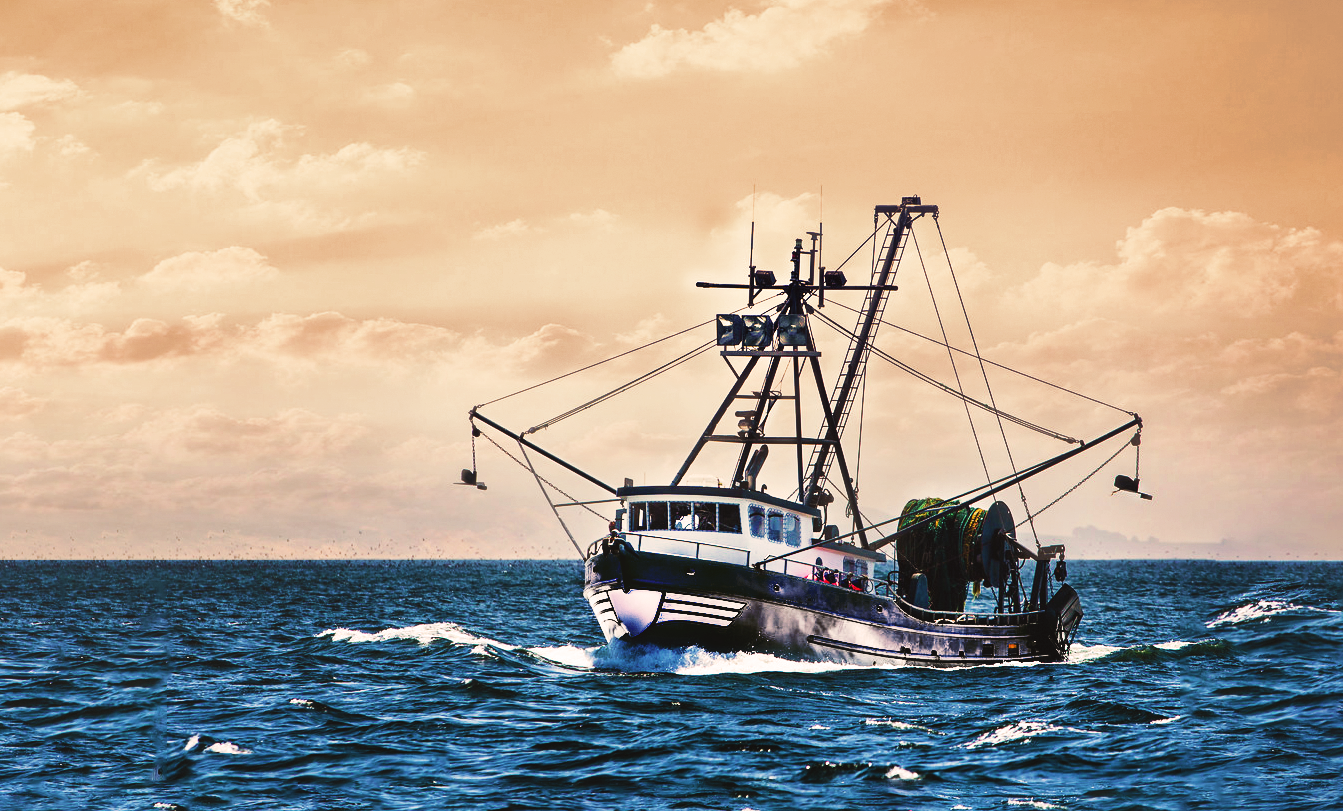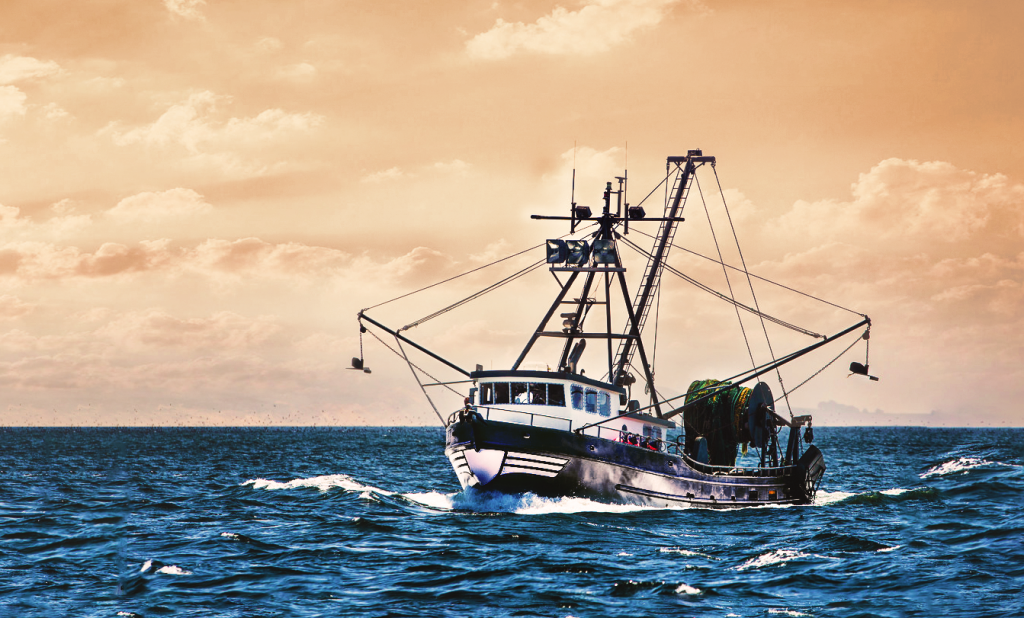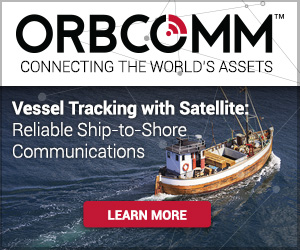
Fishing Vessel Monitoring System Aids Thai Maritime Authorities

Illegal, unreported and unregulated fishing has the potential to damage the marine environment and put fishermen’s lives at risk. We talk to ETNECA in Thailand to find out how ORBCOMM’s vessel monitoring system is being used to promote responsible and sustainable fisheries management, protect the marine environment and improve maritime security while ensuring regulatory compliance.
The customer challenge
Marine fisheries are an important sector for the economic livelihood of the people of Thailand. However, the long-term sustainability of the fishing industry has been threatened due to unrestricted access to fishing grounds and unauthorized fishing inside and outside of Thai waters.
In 2015, new regulations were introduced to address those issues. A national plan of action was set up to prevent, deter and eliminate illegal, unreported and unregulated fishing (IUU), to achieve a sustainable and environmentally friendly fishery and seafood industry. One key measure was that all commercial fishing vessels greater than 30 gross tonnage (GT) would be required to install a Vessel Monitoring System (VMS). Implementation was undertaken by the Thai Department of Fisheries (DoF) and the Royal Thai Navy, the government authorities responsible for regulating and controlling fisheries resources, sustaining the marine environment and enhancing the safety of fisherman at sea.
To comply with the regulations, the Thai command center for combating illegal fishing and Thai government required a centralized VMS that would be easy to use and install. In addition, it needed to meet some specific requirements:
• Enhance maritime safety and guidance rescue operations.
• Transmit the routes taken as well as the fishing zone(s) in which vessels operate.
• Collect data that can be used in the event of a vessel crossing into restricted zones.
• Monitor access to restricted zones like oil rigs and ecological zones such as coral reefs.
This is where fisheries vessel monitoring systems come into play…
The solution: ETNECA’s Fishing Vessel Monitoring System
ETNECA is Thailand’s leading service provider of maritime satellite communications. Established in 2012, it develops data transmission and marine communication services, delivering vessel tracking, marine data transmission, marine traffic monitoring and electronic fishing industry protection services throughout Thailand and Myanmar. It is one of ORBCOMM’s key solution providers in the region.
Starting in 2014, ETNECA turned to ORBCOMM to create a VMS solution for Thailand. Working with ORBCOMM’s two-way global IsatData Pro (IDP) satellite technology, ETNECA deployed ORBCOMM’s IDP-690, and later the ST 6100 – satellite terminals designed to provide full visibility of fishing operations and access vessel data including real-time position, course and speed as well as catch report—regardless of vessel location.
Chatri Petchor, Overseas Manager of ETNECA, says that ETNECA had been involved in developing marine data transmission and traffic monitoring systems for the Thai navy since 2012 before the Thai VMS was implemented. “There were about 10 or 12 providers who were looking for approval at that time,” Petchor says. “We were lucky at the time of implementation that we could use ORBCOMM to help us challenge for the Thai approval as a service provider. Today, we have the biggest market share in Thai VMS”.
ORBCOMM’s ST 6100 satellite terminal delivers complete visibility and control of assets operating at sea. Vessels stay connected with the always-on, two-way satellite connectivity over the Inmarsat IDP service. The environmentally-sealed ST 6100 provides all of the ruggedness required on fishing vessels and its programmable terminal, advanced configurable apps and scripts ensures it is suitable for a wide range of maritime applications.
ETNECA uses the platform to record fishing activities and report them to fishing authorities. The Thai FMC use the system to understand the exact location of the fishing vessels once they leave port and throughout the fishing zone. Real-time monitoring is enabled through alerts and notifications. Vessel activity can also be analyzed with reports including vessel sailing routes, fishing zones and restricted zones–which can be combined with other data sources to prevent illegal fishing.
“The primary requirement is mostly to know where the fishing vessel is located when they are going out fishing. The basic VMS data is sent from the terminal to the authorities,” says Petchor.
ETNECA’s VMS tracks location, sailing route, speed, heading, longitude, time and date. In recent times, vessels have to send more data back to the FMC. “When you are leaving the port, you have to report that. When you are at the fishing area, you start fishing, you throw a net in the water – you send data back to the authority. When you return to port, you have to click the button again to send the data to the center, to know that you are on the way back to the shore,” Petchor says. “Secondly, the authorities can use geofencing to monitor the environmental side. When fishing vessels go to catch fish near restricted areas, it is too dangerous to get nearby. If vessels get caught crossing the geofence, they will get a warning. The fisheries department can send their case to the justice department and they may be fined for that.”
The full programmability of the ST 6100 terminal also provided ETNECA with the ability to address other maritime applications. E-Chat, a communications solution for those spending much of their time at sea, was developed by ETNECA to overcome the limitations of other onboard devices such as satellite telephone, cellular mobile phone and radio communications devices by sending short messages via IDP. Chatri Petchor says, “We like the IDP very much, because we were able to modify and develop our own chat application to use a very minimized data usage for fisherman to communicate back to their families.”
Authorities are also using the system to monitor for human trafficking. By looking for suspicious behavior of vessels, Petchor says that the real-time data can provoke questions like “why are these two vessels too close to each other in a place that they shouldn’t be?” Early interventions are made possible if authorities suspect the occurrence of human trafficking.
The outcome
By making the installation of a VMS mandatory by law, the Thai Department of Fisheries has been able to monitor and control fishing vessel movements. Combined with other initiatives, the control of the number of fishing vessels allowed out of port has reduced unregulated fishing activities in Thailand. To date, the Thai fishing vessel fleet has become significantly more compliant than before the fishing vessel monitoring system was introduced.
ETNECA has played a significant role. Now monitoring more than 3,500 vessels, it has the largest market share of fishing vessel monitoring systems in the region. ETNECA also now works with authorities in Myanmar. Petchor puts the success down to several factors. “The devices and service from ORBCOMM are very stable and reliable. They are highly programmable and configurable, which allows ETNECA to build a customized solution for delivering to fishermen to meet the Thai VMS requirements. Also, the price—including data rates and supporting services from ORBCOMM—is cost-effective for the fishermen to handle in the Thai market.”
Future applications could include helping fishermen in vessels to use an electronic logbook instead of manually filling it. Petchor says that, “This will be required soon. We don’t know how often they have to report the logbook, but assuming it’s every 24 hours, that’s going to be much more in use on each vessel.” He also says that the VMS program could be extended to vessels under 30 GT. “The next program will be anything below 30 GT, which I think is going to happen this year.”
At ORBCOMM, we are dedicated to helping enable compliant and sustainable fisheries management, as well as improving the data for scientific fisheries research. If you’re interested in learning more about vessel tracking systems, and how we can simplify your VMS development, get in touch with our team today at info@orbcomm.com.

Cody Lirette is Senior Content Marketing Manager at ORBCOMM. With over a decade of marketing and communications experience for both the public and private sector, he uses his passion for innovative technology and plain language to build compelling content that inspires action.

















